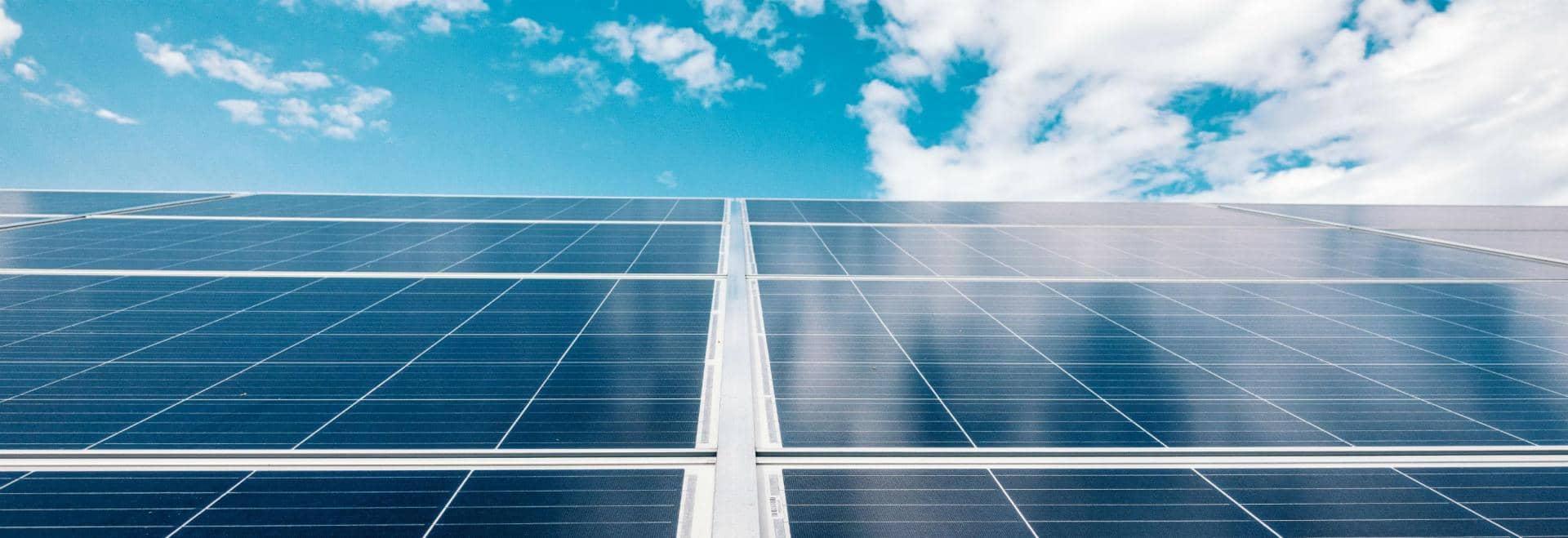
Market Perspectives April 2020
Financial market sell-offs, in the face of unprecedented policy measures to fight the effects of the Covid-19 outbreak, suggest any rebound may be a few months away.

03 April 2020
6 minute read
By Damian Payiatakis, London UK, Head of Impact Investing
With the rapid fall of oil prices, should investors reconsider the renewable energy sector?
In March, oil prices more than halved, to end the month around $20 a barrel and close to an 18 year low. We currently expect the oil price for 2020 to find an equilibrium at $31 a barrel. Given these levels, questions have been raised about whether this would derail the growth of the renewables sector and our transition toward lower-carbon energy.
Times and industry dynamics are different from periods of low oil prices during 2008 and 2014-16. Many countries have set out ambitious targets to cut net emissions in the coming decades. Renewables have rapidly grown; gathering momentum in the last decade, in part due to increasing costs of extracting and refining fossil fuels.
But with governments and industries focused on maintaining stability and liquidity, will the benefits of a lower oil price dim the appeal of renewable and energy transition plans? According to Fatih Birol, the head of the International Energy Agency (IEA), the fall in prices “…will definitely put downward pressure on the appetite for a cleaner energy transition” and will be a “good test” of all the climate targets that governments and companies had committed to recently.
Even before the both the oil price drop and economic shock of the Covid-19 pandemic, investment in renewable energy has slowed since 2017. Traditional assumptions suggest a low oil price is bad news for renewables. However, the dynamics of the energy sector and the environmental emergency we face means this is unlikely to be the case in the long term.
In the short term, a slowing of the momentum of renewable energy sector is likely – but not primarily due to oil prices, as much as economic difficulties. Oil is predominantly used for transport – cars, trucks and planes – in the form of gasoline or diesel. Then, as a heating oil for heating homes and buildings, there are industrial heating applications. And third, as hydrocarbon gas liquids for feedstock for the petrochemical industry.
In contrast, renewables are used mostly to generate electricity. In the former list, there aren’t many sectors where renewables serve as a direct substitute for oil. Where electrification has gained initial traction, for example with electric vehicles (EVs), lower oil prices make EVs less attractive based on fuel efficiency. However, as oil prices rose in 2019, the EV market had already slowed as demand weakened in China and the US.
Amid the Covid-19 outbreak, we should expect further declines in sales, akin to the rest of the motor industry. However, inevitable policy changes, such as the UK bringing forward its ban on selling new petrol, diesel or hybrid cars to 2035, will shift the dynamics more substantially than lower oil prices.
In the short run, energy companies may slow their recent commitments to position themselves for a low-carbon transition. Pressure to maintain dividends (to attract investors), retain cash (to weather lower demand) and lower revenues (from cheaper oil prices) may mean that there will be less potential investment for renewables. However, given the sector accounts for just 2% of investment in renewables, a near-term slowdown of their investment would not derail financing renewables projects.
In the short run, oil and gas companies may slow their recent commitments to position themselves for the transition to a low-carbon economy
For power generation, the effect of low oil prices looks more nuanced. Given oil is used in only a small fraction of electricity generation globally, lower prices should have little effect. Only at around $15 per barrel does it become competitive, which is also not profitable for the majority of producers.
However, lower oil prices can affect natural gas prices, which can produce low-cost electricity in existing facilities. With natural gas at lower prices for some time, and without effective storage to address latency issues of renewables, it could emerge as a significant alternative that hinders the installation of new renewables facilities.
Government support for clean energy could also diminish from the oil price and economic shock. Those forced to reallocate spending to address immediate hardship may deprioritise investment for renewables.
With current headwinds, a world mainly powered by clean energy appears to be further away. However, the direction of travel is one-way.
The renewables trend is structural – both from an environmental and an economical perspective. As a new technology, renewables are becoming the lowest cost option to produce energy. Since 2010, both solar and battery costs have dropped by up to 85% and wind costs by up to 49%.
In fact, lower oil prices could accelerate a structural shift away from fossil fuels by energy companies. Historical arguments that investment in renewable energy generates less attractive returns than fossil fuels do not hold at current oil price levels. Moreover, wind and solar projects have lower technical risk and longer term price stability – both which are very attractive at the moment
With lower revenues, energy companies will struggle to maintain dividend payments, which has supported their attractiveness to investors. Additionally, with governments no longer generating oil tax revenues, there is increased risk of policy changes that strand the companies’ reserves. Finally, with lobbying and potential legal risks, the sector is becoming “unloved” by the public unless they accelerate their pivot.
Once our focus on overcoming the pandemic, and its destabilising economic effects, is over then pressures to tackle climate change will re-emerge. Likely, they will increase as we have less time available to mitigate and adapt to its effects.
There is a scenario in which governments focus fiscal stimulus and bailouts with a green “lens” or conditions to accelerate the low-carbon transition. However, it seems unlikely that such a thoughtful approach will be taken given time and political pressures.
Compared to previous years, risk of climate change falling off the political agenda is low, notably with the critical United Nation’s Conference of Parties (COP) planned for 2021. The threats posed by climate change will remain for decades – even as oil prices continue to go up and down.
Investors able to see beyond the current economic hardship may see the short-term challenges as a value opportunity to build positions in clean energy. In doing so, they can take advantage of opportunities to diversify their investments as well as reaping the “emotional” returns of positively contributing to our world.

Financial market sell-offs, in the face of unprecedented policy measures to fight the effects of the Covid-19 outbreak, suggest any rebound may be a few months away.

Barclays Private Bank provides discretionary and advisory investment services, investments to help plan your wealth and for professionals, access to market.
This document has been issued by the Investments division at Barclays Private Banking division and is not a product of the Barclays Research department. Any views expressed may differ from those of Barclays Research. All opinions and estimates included in this document constitute our judgment as of the date of the document and may be subject to change without notice. No representation is made as to the accuracy of the assumptions made within, or completeness of, any modeling, scenario analysis or back-testing.
Barclays is not responsible for information stated to be obtained or derived from third party sources or statistical services, and we do not guarantee the information’s accuracy which may be incomplete or condensed.
This document has been prepared for information purposes only and does not constitute a prospectus, an offer, invitation or solicitation to buy or sell securities and is not intended to provide the sole basis for any evaluation of the securities or any other instrument, which may be discussed in it.
Any offer or entry into any transaction requires Barclays’ subsequent formal agreement which will be subject to internal approvals and execution of binding transaction documents. Any past or simulated past performance including back-testing, modeling or scenario analysis contained herein does not predict and is no indication as to future performance. The value of any investment may also fluctuate as a result of market changes.
Neither Barclays, its affiliates nor any of its directors, officers, employees, representatives or agents, accepts any liability whatsoever for any direct, indirect or consequential losses (in contract, tort or otherwise) arising from the use of this communication or its contents or reliance on the information contained herein, except to the extent this would be prohibited by law or regulation..
This document and the information contained herein may only be distributed and published in jurisdictions in which such distribution and publication is permitted. You may not distribute this document, in whole or part, without our prior, express written permission. Law or regulation in certain countries may restrict the manner of distribution of this document and persons who come into possession of this document are required to inform themselves of and observe such restrictions.
The contents herein do not constitute investment, legal, tax, accounting or other advice. You should consider your own financial situation, objectives and needs, and conduct your own independent investigation and assessment of the contents of this document, including obtaining investment, legal, tax, accounting and such other advice as you consider necessary or appropriate, before making any investment or other decision.
THIS COMMUNICATION IS PROVIDED FOR INFORMATION PURPOSES ONLY AND IS SUBJECT TO CHANGE. IT IS INDICATIVE ONLY AND IS NOT BINDING.
